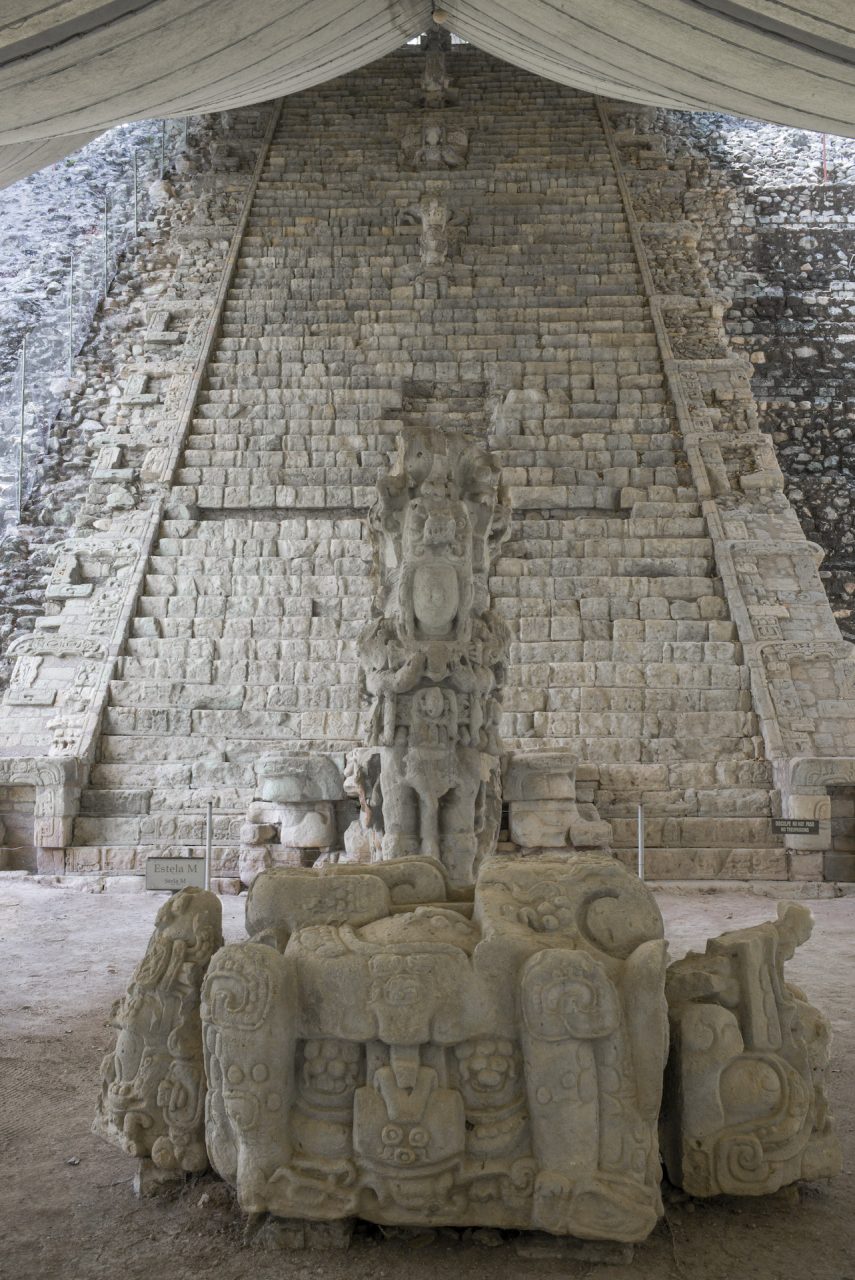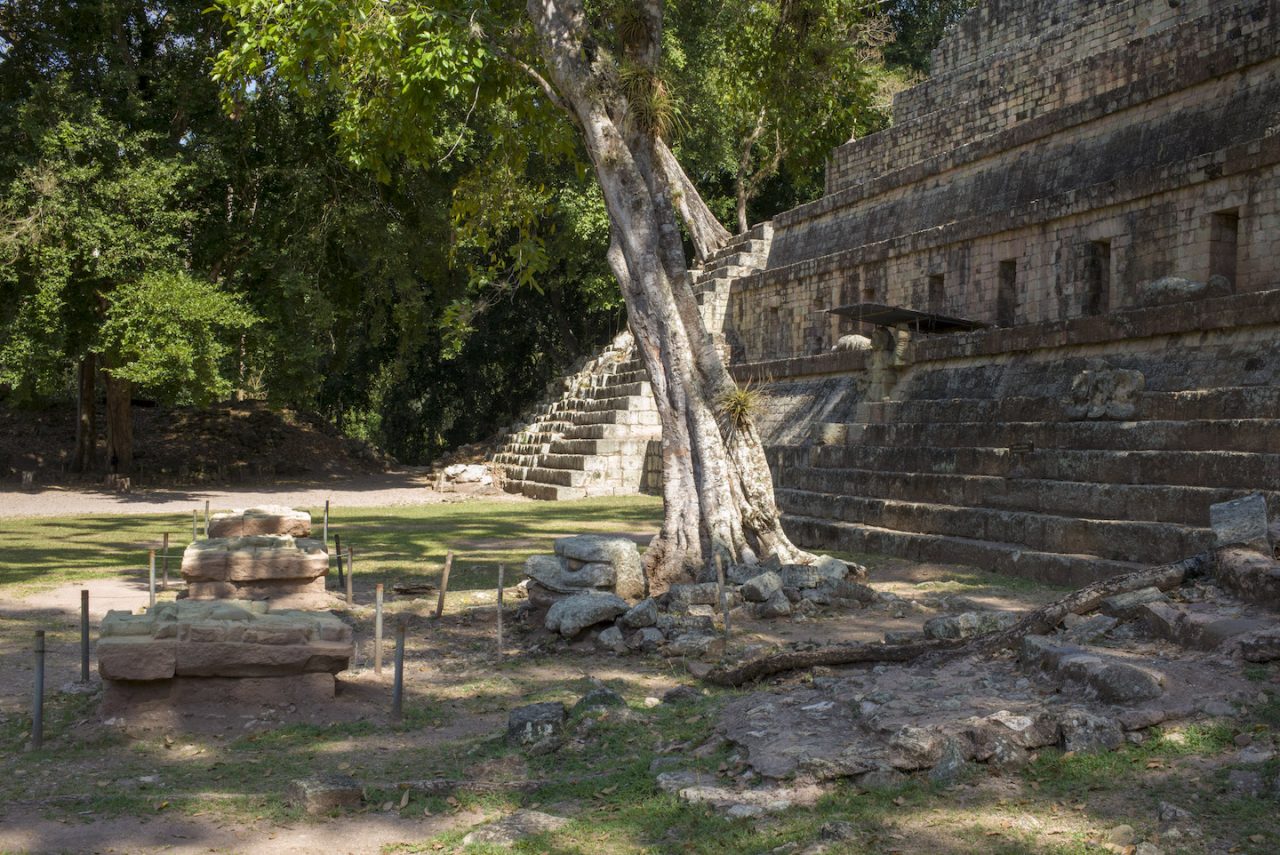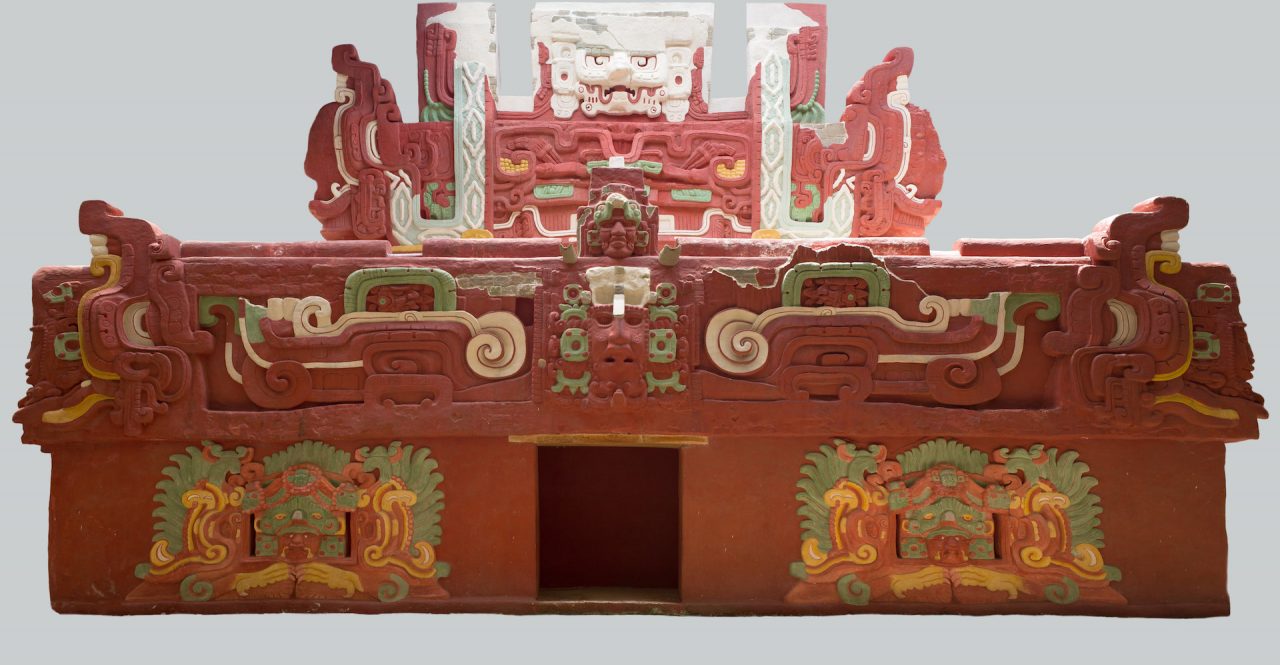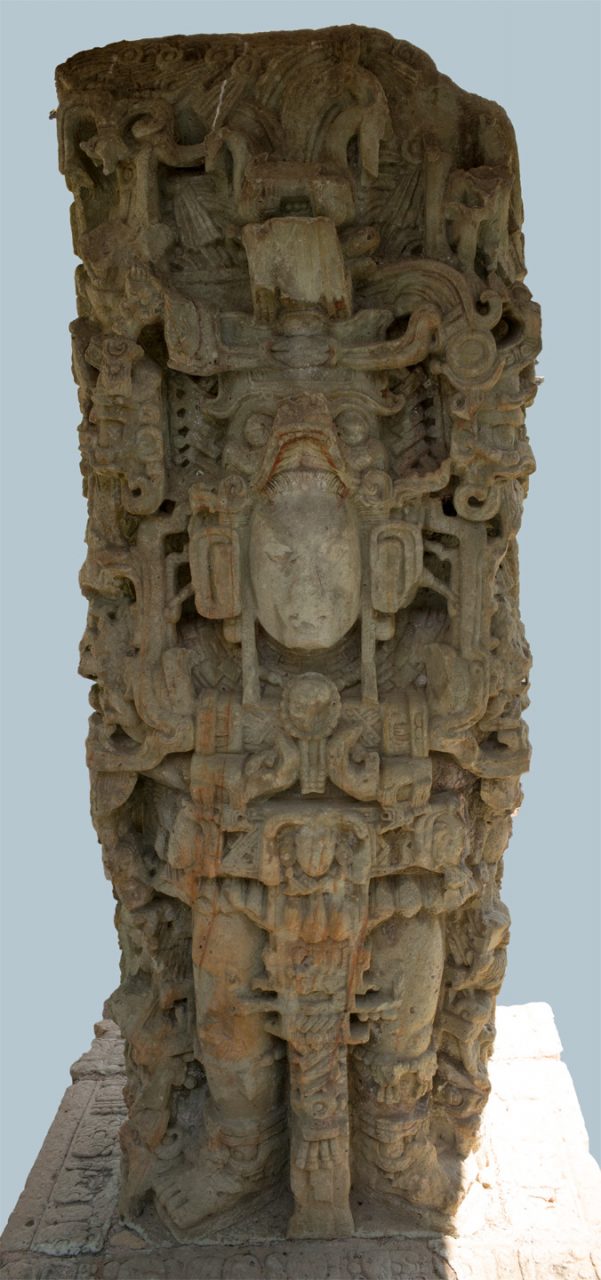Honduras
Copan

The Maya preoccupation with entwining the flow of time with stone, and the foundation or stability it provides, is also recorded in artworks at Copan; here the famous hieroglyphic stairway incorporates the physical motion of rulers and priests negotiating its steps (also at Palenque). The long text forming the hieroglyphic steps physically connects each footstep taken by a king climbing and descending its structure, his footfall resounding on the carved stone steps, to echo historical events across time and therefore support the royalty stepping upon them. The Mayan word for ‘step’ (as in stair or rung) is ebtun (Conde 2002:99), thus incorporating time and stone with the concept of walking motion, performed by the king.

[2] Hieroglyphic text carved on Copan Late Classic Stela F, east side, showing ruler Waxaklajuun Ub’aah K’awiil on obverse; the surrounding rope literally binds the glyphic record of time to the stone pillar.



The three flint deities’ headdresses, reminiscent of deer antlers, fork and metamorphose into six further faces, which, when viewed in combination with the main figure, outline moon shapes; the lunar crescent is generally accepted as representing the most characteristic attribute of the Moon Goddess. These further six heads within each figure’s headdress allude both to the Moon Goddess’s regenerative fertility and to the allegorical yearly growth of deer antlers, conceptualising the motion of time. The triadic repetition and grouping of the flints, each displaying subtle changes in form, implies movement and the moon’s monthly cycle.
After Fash 2001:147-149, fig. 92
Stelae

J_Copan 1
Details of Late Classic Stela D that, on circumambulation of the the stela and the king Waxaklajuun Ub’aah K’awiil’s representation, animate K’awiil-deity heads to emerge from reptilian maws and raise a probable flower, which, in the lower example, emits jade or itz, ‘precious substance’, ovals.
The K’awiil heads are positioned to surround the ruler on his right and left sides (at the east and west). They appear at the height of his headdress and again at the sides of his loin cloth, thus seemingly showering the lord in precious substances and likely the gift of birth, a role closely connected to this deity (see Maya Gods of Time).
The deity figures’ animation stands in contrast to the stance adopted by the lord, who regally stands, immobile, as if anchored to the ground by his ceremonial bar. The motion of the figures twirling about his person therefore highlight the lord’s dependability through his strength and also reinforces the Maya notion of motion (and time) balanced by stability and strength.
Animation extracted and adapted from Maudslay 1889-1902, vol. 1, plate 46a [east] and b [west sides].

J_Copan 2
Details of Late Classic Stela N that, on circumambulation of the stela and the Copan king K’ak’ Yipyaj Chan K’awiil’s statue, animate figures to move and transform while climbing about his person via an elaborately-woven cord. The cord, which may be read as the flow of time as it guides the figure’s movements around the king’s body, thus literally binds the stone ‘holding’ his person and rule to the passage of time; see also the obverse of Stela F [2], where a similarly-woven time cord binds the text craved into the stela stone.
A fish feeding from an open water lily blossom emerging from the top of the lord’s beast-headdress, is animated to swell in size [top example]; while a deity’s contortions transform him into a deer [lower example]. Note how, in the latter example, both figures stretch upwards to form a fluid motion describing them reaching up into the cord wrapped around the lord they climb. In addition, the deity’s hair locks mimic the shape of the deer’s ear and the oval shapes of his beaded necklace are repeated in the deer’s ear. The deity might represent one linked to the sun, judging by his square eye that contains a celestial symbol. The deer, in turn, was also closely tied to the sun.
The writhing smaller figures are positioned to surround the ruler on his right and left sides (at the east and west). The fish occurs at the height of his headdress and the transforming deer-figure at the sides of his loin cloth.
Once again [see 6 above], the figures’ animation stands in contrast to the stance adopted by the lord, who stands motionless as a pillar of strength anchored to the ground by his ceremonial bar amongst the chaos of change brought on by time. The cavorting figures’ motion, climbing about his person, again stress the Copan king’s strength by contrasting his being with the Maya notion of chaotic movement (and passage of time); together, that is, time as movement and stability, creating the sacred balance guiding their worldview.
Animation extracted and adapted from Maudslay 1889-1902, vol. 1, plate 79a [east] and b [west sides].
Ceramics
J_Copan 3
Details of a Copador-style polychrome ceramic that, on rotation in the viewer’s hands, reveals movement in the two figures sitting one behind the other. A canine creature emitting a large bifurcated scroll from its maw and large erection sits behind an elite male facing to the viewer’s right. On rotation of the vase, the male leans forward while pressing the back of his raised hand against his mouth, while the canine ejaculates.
Animation extracted and adapted from Kerr 1994:603, file no 4836.
J_Copan 4
Details of a Classic polychrome cylinder vase animate in two depictions a parrot, possibly a Macaw, which abound at the site today, to twist and stretch out its left wing.
Animation extracted and adapted from Reents-Budet 1994:202, fig. 5.41.
